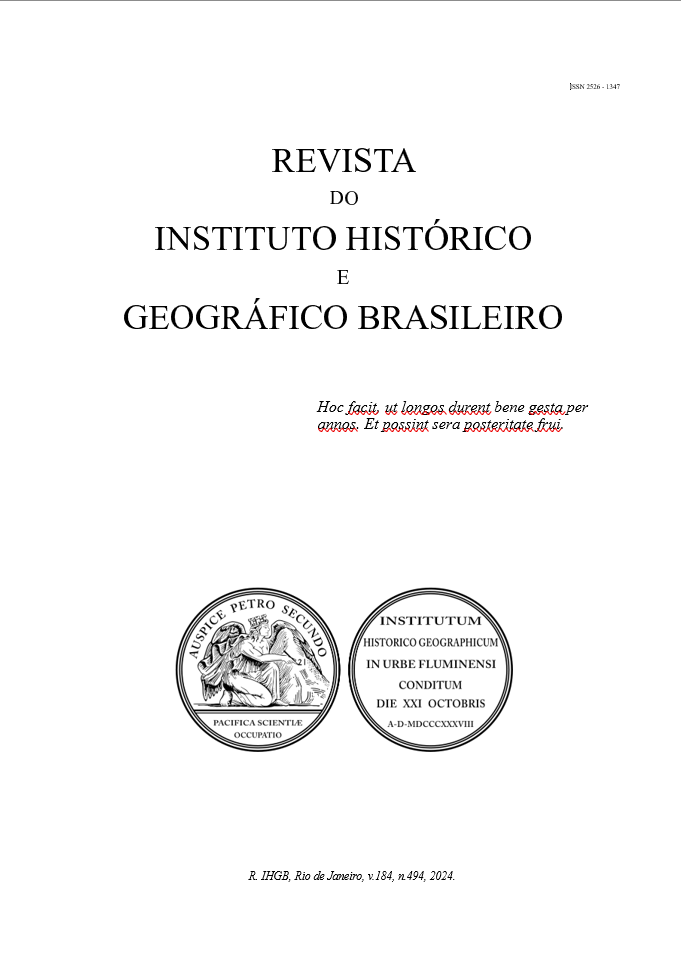Um precatório da Inquisição e o tráfico de escravizados na África Centro-Ocidental (fim do século XVI e início do XVII)
DOI:
https://doi.org/10.23927/revihgb.v.184.n.494.2024.61Palavras-chave:
África Centro-Ocidental, Tráfico de escravizados, Inquisição, pumbo, “Onda Angola”, História AtlânticaResumo
Este trabalho apresenta, por meio da transcrição e análise do “Precatório de Rodrigo Aires”, elementos inéditos sobre o tráfico de escravizados na África Centro-Ocidental, entre o fim do século XVI e início do XVII. Trata-se de uma juntada de documentos decorrente de uma ordem de pagamento da Inquisição em benefício da mãe do pombeiro Aires Fernandes, Maria Fernandes, como sua herdeira, representada por outro filho, Rodrigo Aires. A juntada reúne desde documentos da prisão do pombeiro, em 1595, até os impasses finais do processo que retornou à Inquisição em 1604. O período foi o início de um processo que Linda M. Heywood e John K. Thornton denominaram a “Onda Angola”, em que o tráfico de escravos dessa região superou o da África Ocidental. O “Precatório” revela detalhes sobre este comércio, tanto em suas conexões atlânticas como nos sertões africanos, e o envolvimento de diferentes agentes e instituições: governadores gerais; contratadores; autoridades civis e religiosas; chefes e escravizados africanos; e a própria Inquisição.
Downloads
Publicado
Edição
Seção
Licença
Copyright (c) 2024 Revista do Instituto Histórico e Geográfico Brasileiro

Este trabalho está licenciado sob uma licença Creative Commons Attribution-NonCommercial-NoDerivatives 4.0 International License.
Os textos da Revista do IHGB são publicados sob uma licença Creative Commons BY-NC-ND, ou seja, é permitindo o acesso gratuito e imediato ao trabalho e permitindo ao usuário a ler, baixar, distribuir, imprimir, buscar, ou criar links para o texto completo dos artigos (acesso aberto). Reusos dos textos, como citações ou republicações devem mencionar a autoria dos mesmos, mencionar que a publicação foi realizada na Revista do IHGB e não podem ser utilizados com fins comerciais e/ou sofrerem adaptações sem expressa autorização do Editor-chefe da Revista do IHGB e/ou a Diretoria do IHGB.



